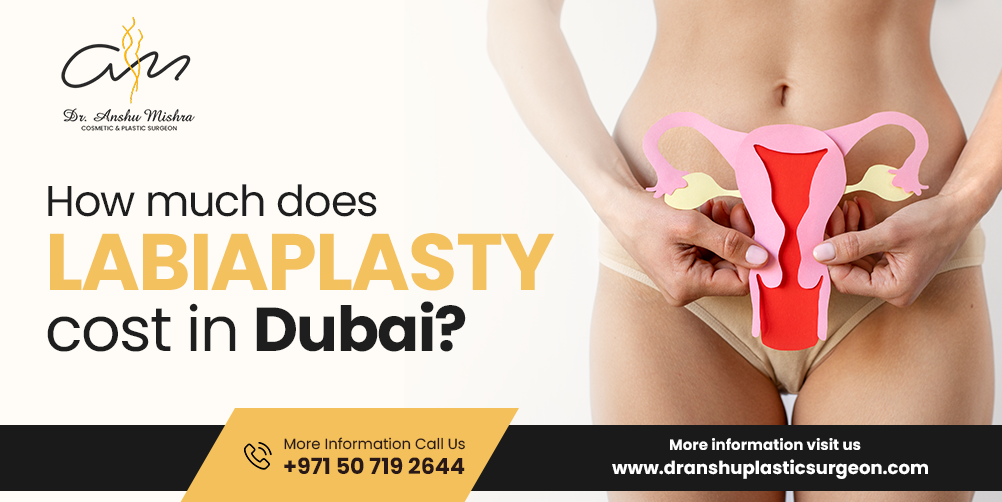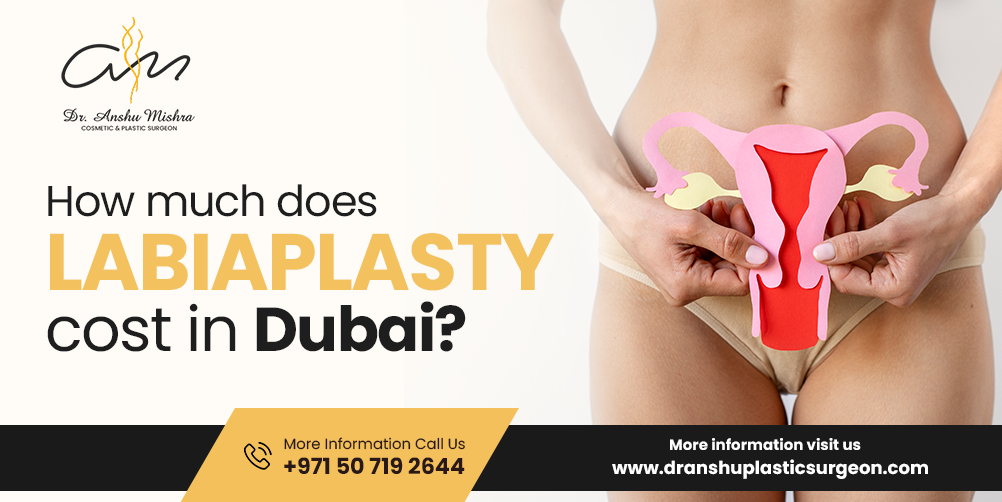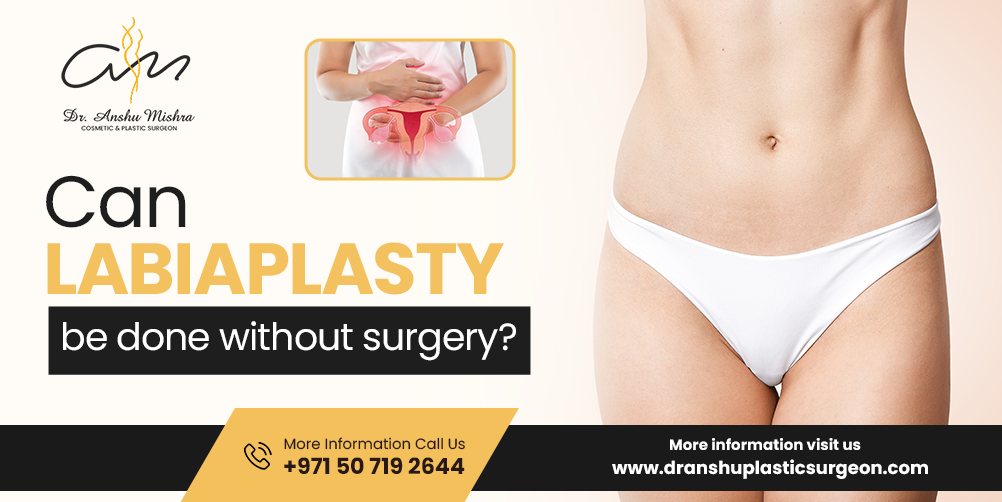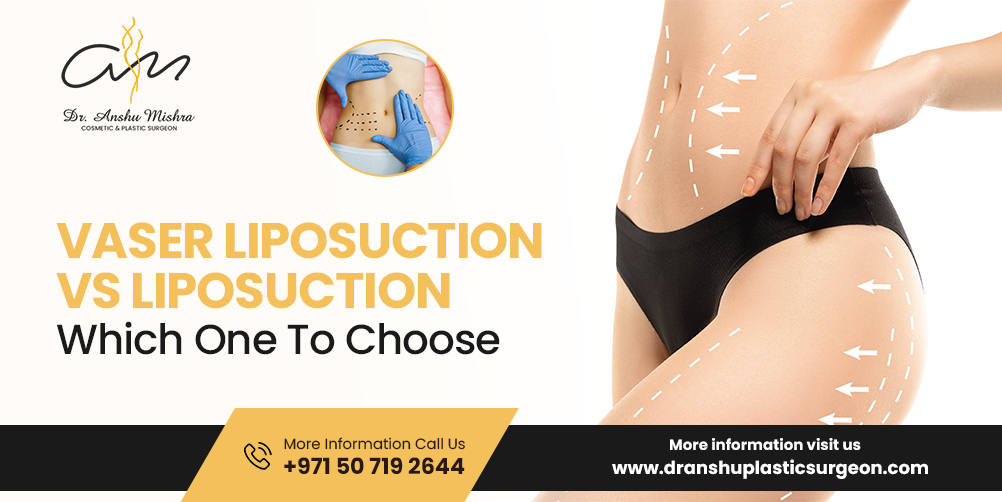Labiaplasty might seem like a major choice for a lot of ladies. For factors like physical pain, personal preferene, or even confidence, you may be thinking about it. Whether you’re thinking about getting a labiaplasty to make yourself look better or for medical comfort, the best plastic surgeon in Dubai, Dr. Anshu Mishra promises a safe, personalised process that meets your specific needs and goals.
In these conversations, one common query is how painful labia surgery is? Although each person has a different threshold for pain, the positive news is that labiaplasty pain is typically tolerable and transient ,thanks to improvements in surgical methods and appropriate aftercare.
This blog will discuss elements that affect discomfort, what to expect from labia surgery in terms of pain, and how to properly manage pain while recovering.
Table of Contents
ToggleKnowing Labia Surgery: What to Anticipate
Labiaplasty, sometimes called labia surgery, is a technique where the labia majora (the outer vaginal lips) or the labia minora (the inner vaginal lips) are reshaped or reduced in size. In addition to improving beauty and improving hygiene by making the region simpler to clean, the surgery may help reduce discomfort caused by swollen or uneven labia.
You can go back home on the day of the surgery because the operation is usually done as an outpatient procedure. The intricacy of the procedure and the patient’s wishes will determine whether local or general anaesthesia is utilised.
Pain During the Process
The majority of ladies are happy to learn that the operation itself won’t cause them any discomfort. This is because labiaplasty is usually done under:
- Local Anaesthesia: If local anaesthesia is applied, the surgical site will be made numb so that you won’t experience any discomfort. No severe discomfort—just a tiny pressure or movement—may be felt.
- General Anaesthesia: You won’t feel anything throughout the procedure and will be asleep the entire time, thanks to general anaesthesia.
For the majority of patients, the combination of sedation and local anaesthetic ensures a painless experience during the procedure. Having said that, your surgeon will talk to you about the best option depending on your preferences, health, and the difficulty of the procedure.
Pain Following Labiaplasty: How Does the Healing Process Feel?
Usually, the topic of pain comes up concerning the healing process following surgery. So, how painful is the labiaplasty healing process?
In the initial days after the surgery, the majority of patients report mild to moderate discomfort. Usually, there is more of a soreness or discomfort than a severe, excruciating pain. Some women have the feeling to the soreness that follows delivery when the region becomes sensitive and swollen.
Typical Post-Op Symptoms
Swelling: Swelling is normal and often peaks two to three days post-surgery, then progressively goes away over the following two weeks.
- Bruising: The surgical site may also have some bruising, which might be a factor in part of the discomfort.
- Tightness: Some women claim to have a tugging or tightening sensation, particularly while they are sitting or moving.
Pain Management After Labia Surgery
The good thing is that, with the correct attention and medicine, postoperative pain may be effectively managed. Here’s a summary of ways to manage and lessen discomfort as you heal:
Painkillers
For pain management, your surgeon will recommend over-the-counter or prescription drugs. For the first several days, stronger prescription medicines may be given in some situations. To keep ahead of the pain, it’s critical to take these drugs as prescribed, particularly during the first 48 hours after surgery when agony usually peaks.
Cool Compresses
A cold compress can numb the region and dramatically reduce swelling, which can further relieve discomfort. For ten to fifteen minutes at a time, applying a cold pack covered in a cloth to the surgical site might be beneficial in the initial days following the surgery.
Elevation and Rest
Using pillows to raise your pelvis slightly when you sleep will help minimise pain and oedema. The first few days should be spent avoiding extended sitting as this might put pressure on the region and exacerbate pain.
Loose Clothes
You can reduce friction on the surgery site by dressing loosely and comfortably. While you’re recovering, stay away from leggings, slacks and tight knickers.
Sitz Baths
Warm water soaks used for Sitz baths can help reduce swelling, ease pain, and maintain cleanliness in the surgical region. Make sure you find out from your surgeon when utilising sitz baths is okay to begin following surgery.
What Is the Duration of Pain?
After a labiaplasty, the extreme pain usually lasts for three to five days. Most women report markedly reduced discomfort by the end of the first week. The soreness and oedema, however, may last for several weeks, even though these symptoms get better every day.
According to how physically strenuous their jobs are, most women can go back to mild activities and go back to work within 7 days, but full recovery often takes 6–8 weeks. To ensure optimal recovery, it’s crucial to refrain from physically demanding tasks, exercise, and sexual activity for a minimum of four to six weeks.
Factors Influencing Pain Severity
Although most labiaplasty patients recover well, there are a few things that might affect how uncomfortable you feel:
Surgery’s Extent
Somewhat less painful than a more involved operation that treats both the labia majora and minora is a simpler treatment that involves just the labia minora. Your risk of experiencing swelling and discomfort after surgery increases with the amount of tissue that is removed or altered.
Pain Tolerance
Individuals differ in their ability to tolerate pain. A minor discomfort for one person could be extremely unpleasant for another. Your surgeon may recommend stronger painkillers if you have a lower pain threshold to help you cope with the discomfort.
Aftercare Guidelines
To reduce discomfort, it’s essential to adhere to your surgeon’s postoperative care guidelines. Recuperation will be easier and less painful if the region is kept clean, prescribed pain treatment is used, and activities that put strain on the area are avoided.
Is the Pain of Labia Surgery Worth It?
Certainly, in the case of many women, the long-term advantages of labiaplasty exceed the short-term pain. Labiaplasty patients frequently report gains in:
- Physical comfort: When exercising, having sex, or wearing specific clothes, many women find respite from the persistent discomfort brought on by a swollen or uneven labia.
- Self-confidence: A better appearance can contribute to increased self-esteem and a positive body image.
- Cleanliness: By minimising the chance of infections and discomfort from extra tissue, labiaplasty can help people maintain better personal cleanliness.
Conclusion
Although there is some discomfort associated with labiaplasty, it is usually low to moderate and is adequately controlled with medicine, rest, and appropriate care. Most women discover that the advantages of the treatment much surpass the short-term discomfort, especially if it fixes physical pain, boosts confidence, or takes care of cosmetic difficulties.
If you’re thinking about having a labiaplasty but are worried about the discomfort or the healing process, Dr Anshu Mishra, the best female plastic surgeon in Dubai, can walk you through the whole surgery. With years of expertise and a focus on the needs of the patient, Dr. Mishra makes sure that each of her patients gets the finest care possible. Make an appointment for a consultation to go over your options and discover how labiaplasty may boost your self-esteem and comfort.














